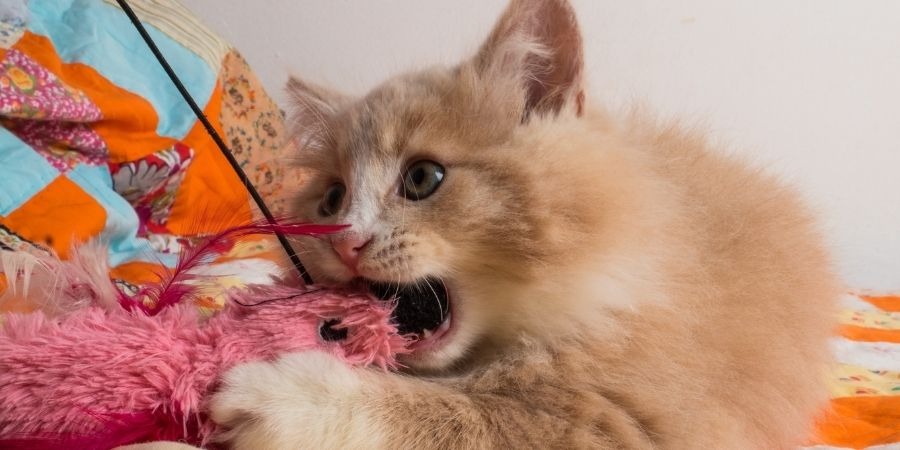Cat Teeth Falling Out: What Every Cat Owner Needs to Know
As a dedicated cat owner, it’s natural to feel worried when you notice your feline friend’s teeth falling out. Could it be painful for my cat? What should I do next? Understanding the reasons behind cat teeth falling out and knowing how to care for your pet’s dental health is crucial. This comprehensive guide covers everything from natural teething processes to serious dental diseases, offering practical tips and expert advice to keep your cat’s smile healthy and bright.
Understanding Why Cat Teeth Falling Out Is More Common Than You Think
Many cat owners are surprised or alarmed to see their feline companions losing teeth, especially if it happens suddenly or unexpectedly. This reaction is understandable; after all, teeth are essential for eating, grooming, and overall well-being. However, it’s important to understand that cat teeth falling out can be a normal part of their development or aging process, as well as a symptom of underlying health issues.
The Natural Process: Kittens Losing Baby Teeth
Kittens are adorable little bundles with tiny, delicate teeth that start to emerge at around three weeks of age. These are their deciduous or “baby” teeth. These teeth are small but strong enough to help babies chew and process their first foods. Between the ages of three and six months, these baby teeth begin to loosen and fall out naturally as their permanent adult teeth grow in. This teething phase can cause some discomfort for kittens—salivation, mild gum swelling, or chewed-up toys are common signs—but it’s a crucial step for their dental development.
When your kitten is undergoing this process, cat teeth falling out is expected and normal. It’s a sign that the growth cycle is progressing properly. If your kitten’s baby teeth aren’t falling out on their own, or if you notice crowding or misalignment, consulting your veterinarian can help determine if intervention is needed.
Adult Cats and Tooth Loss: When It’s Not Normal
While teething is natural for kittens, adult cats should typically retain their teeth unless health issues occur. Sudden or persistent cat teeth falling out in adult cats is a red flag that warrants veterinary evaluation. It’s often related to gum disease, infection, trauma, or other health conditions.
For example, aging cats might experience a gradual loss of some teeth due to normal wear, but extensive or rapid tooth loss can significantly impair their quality of life. The key is in early detection and treatment to prevent discomfort, pain, and nutritional issues.
Causes of Cat Teeth Falling Out: A Deep Dive
Understanding the underlying causes helps you discern whether your cat’s tooth loss is part of normal aging or an urgent health concern. Let’s examine some of the most common reasons in greater detail.
1. Periodontal Disease: The Hidden Enemy
Periodontal disease is a progressive infection affecting the tissues surrounding the teeth, including the gums, ligaments, and jawbone. If plaque isn’t removed regularly through brushing, it hardens into tartar (calculus), which irritates the gums and leads to gingivitis. Left untreated, this progresses to periodontitis, where the infection destroys the supporting structures of the teeth. This deterioration causes the teeth to loosen and eventually fall out.
In cats, periodontal disease is insidious because it often develops without obvious pain early on. By the time symptoms are evident—bad breath, bleeding gums, or difficulty eating—the disease may be advanced. Regular dental check-ups and professional cleanings are key to preventing this common problem.
2. Tooth Resorption: The Painful Mystery
Despite the name, this condition is not caused by “resorption” in the usual sense but by abnormal activity of certain cell types—odontoclasts—that dig into the tooth.
The cause of tooth resorption remains somewhat of a mystery, but it’s believed to be linked to immune responses, genetics, or chronic inflammation. Affected cats often show no symptoms until the disease reaches advanced stages, at which point the teeth may appear abnormal, or the cat may experience pain or bleeding.
Veterinary dentists may recommend removing affected teeth to alleviate pain and prevent further damage. Many cats tolerate tooth extractions well, and removing resorptive teeth usually improves their quality of life.
3. Trauma and Injury: Accidents That Hurt
Cats are curious and agile, but their adventures can sometimes lead to accidents resulting in dental trauma.Broken teeth often expose nerves and pulp tissues, making the tooth prone to infection. If not treated promptly, the infection can spread, causing abscesses or systemic illness. In some cases, badly injured teeth need to be extracted to prevent further discomfort and health problems.
Outdoor cats are more at risk for trauma, but indoor cats can also be injured by biting into hard objects or chewing on inappropriate items.
4. Dental Fractures and Broken Teeth
A common cause of cat teeth falling out is dental fracture. Chewing on hard objects like plastic, bones, or certain toys can cause fractures that range from minor chips to full breakage.
Additionally, fragments can cause pain or inflammation in the surrounding tissues, leading to further dental complications.
Prevention involves choosing safe toys and avoiding hard objects that put your cat at risk.
5. Aging and Tooth Wear
Older cats may naturally experience some degree of tooth wear, including minor fractures or loss of enamel. Nonetheless, extensive tooth loss in senior cats can be a sign of declining dental health or other systemic issues like kidney disease (which can contribute to oral health problems). Regular dental evaluations become even more critical with aging cats to catch issues early.
6. Medical Conditions and Systemic Diseases
Certain systemic diseases predispose cats to dental problems, including:
- Feline calicivirus and herpesvirus:These viral infections cause stomatitis and oral ulcers that weaken teeth and gums.
- Diabetes mellitus:Poorly controlled diabetes can impair immune function, increasing the risk of infections.
- Kidney disease:Chronic kidney disease can lead to mineral imbalances affecting oral health.
- Poor nutrition:Deficiencies in essential nutrients can weaken teeth and gums.
Monitoring overall health and maintaining good hygiene can help reduce the risk of dental complications related to systemic illnesses.
Recognizing the Signs of Dental Problems in Cats
Early detection of dental issues can make the treatment process much easier and less stressful for your feline friend. Here are detailed signs you should watch for:
- Persistent bad breath:Often the first and most noticeable symptom.
- Red, swollen, or bleeding gums:Indications of gingivitis or advanced periodontal disease.
- Difficulty eating:Dropping food, chewing on one side, or reluctance to eat hard treats.
- Altered grooming habits:Overgrooming around the mouth or avoiding grooming.
- Visible tartar buildup:Yellow-brown deposits on the teeth.
- Loose or missing teeth:Can be noticed during grooming or if you gently examine their mouth.
- Behavioral changes:Reduced activity, irritability, or withdrawal may also signal pain.
If you notice any of these signs, schedule a veterinary dental examination. Early intervention can often prevent severe tooth loss and improve the cat’s quality of life.
How Veterinarians Diagnose and Treat Tooth Loss in Cats
A comprehensive veterinary dental exam will assess the overall health of your cat’s oral cavity. This includes inspecting the teeth, gums, and supporting tissues for signs of disease. Often, a veterinarian will take dental radiographs (X-rays) to identify hidden issues beneath the gum line and around the roots.
Treatment options depend on the severity and cause:
- Dental cleaning:Professional cleaning under anesthesia to remove plaque and tartar.
- Tooth extraction:Removal of damaged, infected, or resorptive teeth.
- Medical management:Antibiotics, anti-inflammatory medications, or pain relief as needed.
- Restorative procedures:Less frequently used in cats but available in some cases.
Post-treatment, maintaining good home dental hygiene and regular veterinary check-ups are critical to preventing future problems.
How to Prevent Cat Teeth Falling Out: Practical Tips for Pet Owners
Prevention is the best approach to maintaining your cat’s oral health. Here are actionable tips:
1. Schedule Regular Dental Check-Ups
Vets recommend dental examinations at least once a year, or more frequently for older or high-risk cats.
2. Implement Home Dental Care
Brushing your cat’s teeth daily is the most effective way to prevent plaque buildup. Start slowly, letting your cat get used to touch and taste. Reward with treats or praise afterward. Even if daily brushing isn’t feasible, frequent wipe-downs with dental wipes or gels can help.
3. Use Dental Diets and Treats
Specialized dental diets and treats are formulated to reduce plaque and tartar. These products are often endorsed by veterinarians and can be easily incorporated into your routine.. If you notice anything abnormal, consult your vet promptly.
5. Provide Safe Toys and Enrichments
Avoid giving your cat hard objects that can cause fractures. Opt for softer, vet-approved toys that promote dental health without risking injury.
What To Do If Your Cat’s Teeth Are Falling Out
If you notice your cat losing teeth, quick action can improve their prognosis:
- Assess the situation:Look for signs of injury, bleeding, swelling, or discomfort.
- Limit further trauma:Keep your cat indoors and avoid hard treats or toys.
- Schedule an urgent veterinary visit:Dental problems can cause pain and infection. Early intervention is essential.
- Follow vet advice:Your veterinarian may recommend extraction, antibiotics, or pain management.
- Provide soft food:Make eating comfortable—canned or mashed foods are ideal.
- Monitor recovery:Follow all post-treatment instructions and attend follow-up exams.
Final Thoughts
The occurrence of cat teeth falling out can be a normal part of development in kittens, but in adult cats, it is often a sign that something is wrong. Understanding the causes, recognizing early symptoms, and maintaining routine dental care are essential steps to ensure your cat’s oral and overall health.
Proactive prevention, regular veterinary visits, diligent home care, and prompt treatment can help preserve your feline friend’s beautiful smile and prevent unnecessary discomfort or health complications. Your care and attention make a profound difference in your pet’s life and well-being.




